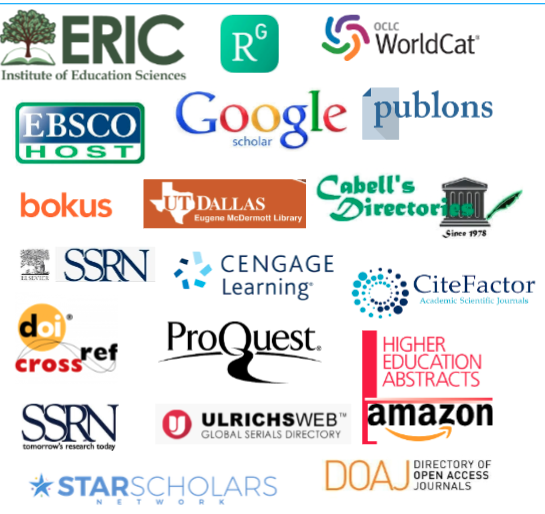College Affordability and U.S. News & World Report Rankings:
Analyzing National and Regional Differences
DOI:
https://doi.org/10.32674/jise.v9i1.1360Keywords:
college affordability, college rankings, student debt, higher education, universities, U.S. News & World Report rankingsAbstract
In an era of billions of dollars in outstanding student loan debt, researchers have posited that the U.S. News & World Report rankings continue to be an influential source of information for prospective students, yet these rankings do not include college affordability metrics in their ranking algorithm. As a result, this study performed a series of college affordability experiments by integrating affordability metrics into the U.S. News ranking algorithm to explore whether any affordability metric predicts overall ranking. Results suggest better ranked institutions enrolled lower percentages of Pell grant receiving students (p < 0.00), while the percentage of undergraduates receiving state aid predicted better rankings only at Regional Midwest and Regional West Universities (p < 0.05). These results suggest many college affordability metrics are not predictive of ranking among the best-ranked, elite institutions. Implications for theory, practice, and college student choice are addressed.
Downloads
References
Alsmadi, I., & Taylor, Z. W. (2018). Examining university ranking metrics: Articulating issues of size and web dependency. ICCBD '18 Proceedings of the 2018 International Conference on Computing and Big Data, pp. 73-77. https://doi.org/10.1145/3277104.3277111
Altbach, P. G. (2012). The globalization of college and university rankings. Change: The Magazine of Higher Learning, 44(1), 26-31. https://doi.org/10.1080/00091383.2012.636001
Bastedo, M. N., & Bowman, N. A. (2010). U.S. News & World Report college rankings: Modeling institutional effects on organizational reputation. American Journal of Education, 116(2), 163-183. https://doi.org/10.1086/649437
Best Value Schools. (2019). The 25 most affordable universities in America 2019. Retrieved from https://www.bestvalueschools.com/most-affordable-universities-america/
Bougnol, M.-L., & Dulá, J. H. (2015). Technical pitfalls in university rankings. Higher Education, 69(5), 859-866. https://doi.org/10.1007/s10734-014-9809-y
Bowman, N. A., & Bastedo, M. N. (2009). Getting on the front page: Organizational reputation, status signals, and the impact of U.S. News and World Report on student decisions. Research in Higher Education, 50(5), 415-436. https://doi.org/10.1007/s11162-009-9129-8
College Consensus. (2019). 100 most affordable colleges & universities. Retrieved from https://www.collegeconsensus.com/rankings/most-affordable-schools/
Ehrenberg, R. G. (2002). Reaching for the brass ring: The U.S. News & World Report rankings and competition. The Review of Higher Education, 26(2), 145-162. https://doi.org/10.1353/rhe.2002.0032
Friedman, Z. (2019). Student loan debt statistics in 2019: A $1.5 trillion crisis. Retrieved from https://www.forbes.com/sites/zackfriedman/2019/02/25/student-loan-debt-statistics-2019/#12ac0a9a133f
Gnolek, S. L., Falciano, V. T., & Kuncl, R. W. (2014). Modeling change and variation in U.S. News & World Report college rankings: What would it really take to be in the top 20? Research in Higher Education, 55(8), 761-779. https://doi.org/10.1007/s11162-014-9336-9
Grewal, R., Dearden, J. A., & Glilien, G. L. (2008). The university rankings game: Modeling the competition among universities for ranking. The American Statistician, 62(3), 232-237. https://doi.org/10.1198/000313008X332124
Griffith, A., & Rask, K. (2007). The influence of the US News and World Report collegiate rankings on the matriculation decision of high-ability students: 1995–2004. Economics of Education Review, 26(2), 244-255. https://doi.org/10.1016/j.econedurev.2005.11.002
Hazelkorn, E. (2007). The impact of league tables and ranking systems on higher education decision making. Higher Education Management and Policy, 19(2), 1-24. http://dx.doi.org/10.1787/hemp-v19-art12-en
Hazelkorn, E. (2009). Impact of global rankings on higher education research and production of knowledge. Unesco Forum on Higher Education, Research and Knowledge, (18), 1-14. https://doi.org/10.21427/D7BG9J
Jaschik, S. (2018). 8 more colleges submitted incorrect data for rankings. Retrieved from https://www.insidehighered.com/admissions/article/2018/08/27/eight-more-colleges-identified-submitting-incorrect-data-us-news
Jaschik, S. (2019). Oklahoma gave false data for years to 'U.S. News,' loses ranking. Retrieved from https://www.insidehighered.com/admissions/article/2019/05/28/university-oklahoma-stripped-us-news-ranking-supplying-false
Meredith, M. (2004). Why do universities compete in the ratings game? An empirical analysis of the effects of the U.S. News and World Report college rankings. Research in Higher Education, 45(5), 443-461. https://doi.org/10.1023/B:RIHE.0000032324.46716.f4
Monks, J., & Ehrenberg, R. G. (1999). U.S. News & World Report's college rankings: Why they do matter. Change: The Magazine of Higher Learning, 31(6), 42-51. https://doi.org/10.1080/00091389909604232
Morse, R., Brooks, E., & Mason, M. (2018). How U.S. News calculated the 2019 best college rankings. Retrieved from https://www.usnews.com/education/best-colleges/articles/how-us-news-calculated-the-rankings
Morse, R. J. (2008). The real and perceived influence of the US News ranking. Higher Education in Europe, 33(2-3), 349-356. https://doi.org/10.1080/03797720802254262
National Center for Education Statistics. (2019). Integrated postsecondary educational data system: Use the data. Retrieved from https://nces.ed.gov/ipeds/datacenter/login.aspx?gotoReportId=1
Niche. (2019). 2019 best value colleges in America. Retrieved from https://www.niche.com/colleges/search/best-value-colleges/
Owings-Edwards, S. (2005). The effect on wage of attending a US News and World Report best college. Journal of College Teaching and Learning, 2(10), 21-32. https://doi.org/10.19030/tlc.v2i10.1870
Patel, V. (2019). How rising college costs and student debt contribute to a social-mobility 'crisis'. Retrieved from https://www.chronicle.com/article/How-Rising-College-Costs-and/246619
Sauder, M., & Espeland, W. N. (2009). The discipline of rankings: Tight coupling and organizational change. American Sociological Review, 74(1), 63-82. https://doi.org/10.1177/000312240907400104
Sauder, M., & Lancaster, R. (2006). Do rankings matter? The effects of U.S. News & World Report rankings on the admissions process of law schools. Law & Society Review, 40(1), 105-134. https://doi.org/10.1111/j.1540-5893.2006.00261.x
Taylor, Z. W., Childs, J., Bicak, I., & Alsmadi, I. (2019). Is bigger, better? Exploring U.S. News graduate education program rankings and internet characteristics. Interchange: A Quarterly Review of Education, 1-15. https://doi.org/10.1007/s10780-019-09366-0
U.S. Department of Education. (2018). College affordability and completion: Ensuring a pathway to opportunity. Retrieved from https://www.ed.gov/college
U.S News & World Report. (2018). 2018 U.S. News best colleges. Retrieved from https://www.usnews.com/best-colleges
Volkwein, J. F., & Sweitzer, K. V. (2006). Institutional prestige and reputation among research universities and liberal arts colleges. Research in Higher Education, 47(2), 129-148. https://doi.org/10.1007/s11162-005-8883-5
Webster, T. J. (2001). A principal component analysis of the U.S. News & World Report tier rankings of colleges and universities. Economics of Education Review, 20(3), 235-244. https://doi.org/10.1016/S0272-7757(99)00066-7







